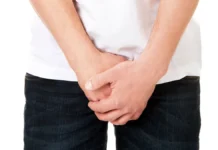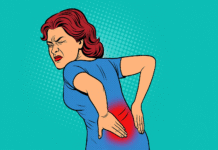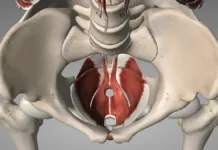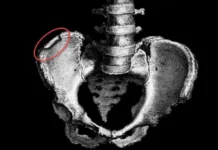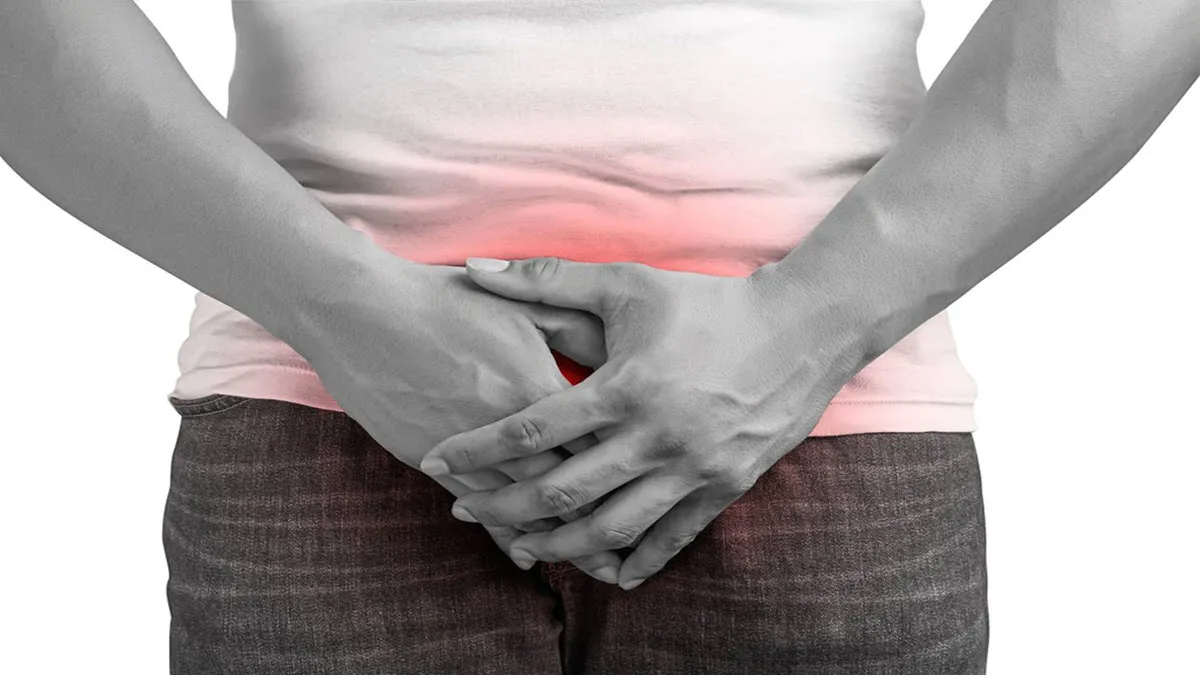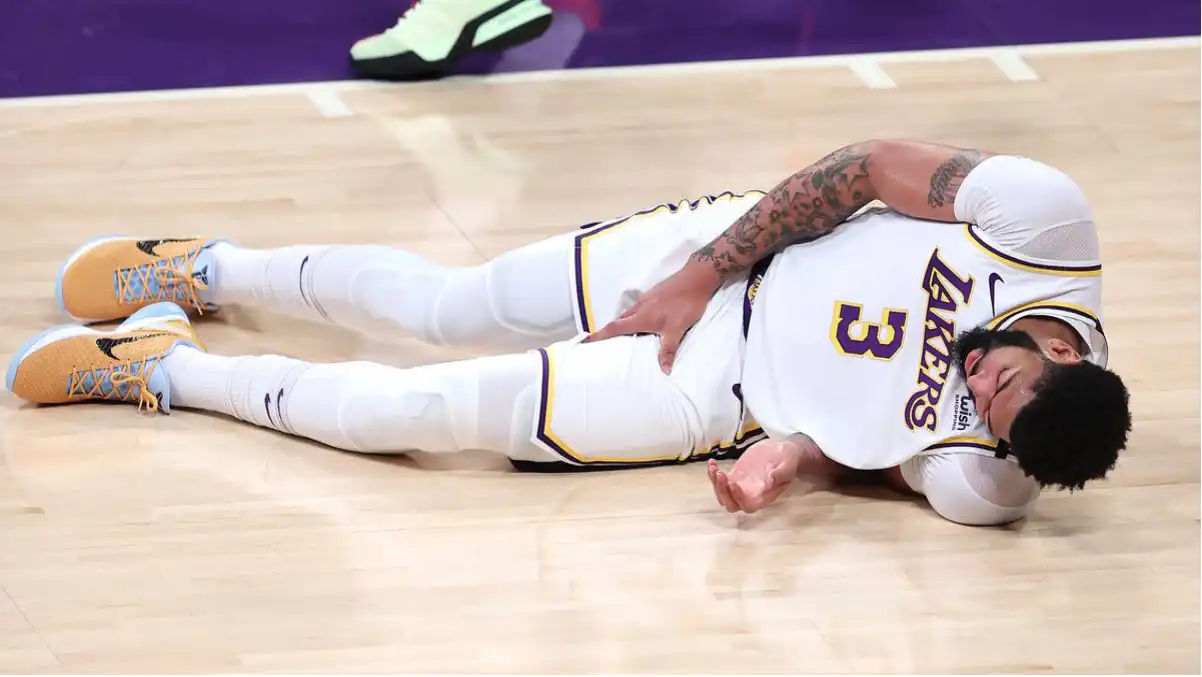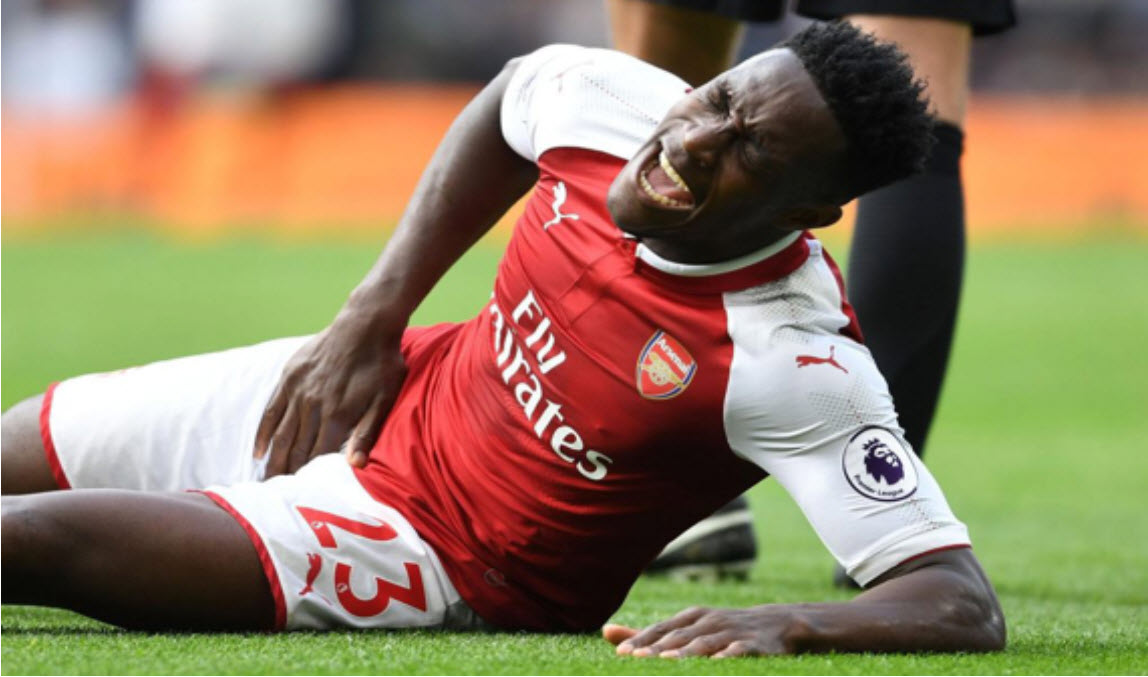Pubalgia is pain present in the inguinal region, caused either by acute macrotrauma, or repetitive microtrauma of the region constituting the insertion of the rectus abdominis and the origin of the hip abductors to the pubis.
Introduction
Pubalgia, a painful condition affecting the pubic symphysis region, is often seen in athletes participating in sports involving rapid movements, frequent changes of direction, and heavy loads on the lower extremities. This condition usually results from muscular imbalances and overuse in the pelvic area. From this perspective, understanding the biomechanics of pubalgia is of crucial importance. In this situation, we will highlight two essential players: the rectus abdominis muscle , and the hip adductor muscles , a set of muscles located on the inside of the thigh. By exploring the role of these muscles in more detail, we will be able to better understand how their biomechanical interactions contribute to the development and prevention of pubalgia in individuals practicing demanding physical activities.
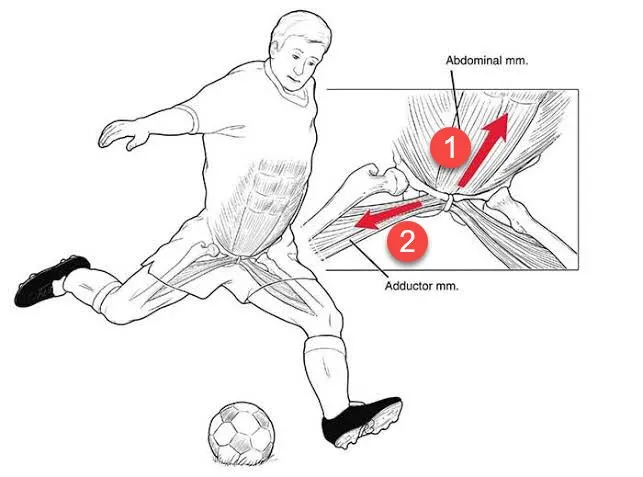
Origins of Athletic Pubalgia
Athletic pubalgia can have varied origins, ranging from repetitive microtrauma to acute macrotrauma. Here is an exploration of the main root causes of pubalgia:
- Repetitive strain injuries: Sports activities that involve repetitive movements, such as frequent changes of direction, jumping, sudden stops and accelerations, can lead to strain injuries to the muscles and joints of the pubic region. Over time, these repeated microtraumas can cause inflammation and damage.
- Biomechanical Dysfunction: Biomechanical abnormalities, such as poor body alignment, muscular imbalances, or irregularities in movement patterns, can place excessive pressure on the pubic region. This can result in excessive stress on muscles and joints, contributing to the development of pubalgia.
- Muscle weakness: Weakness in the stabilizing muscles of the pelvis, particularly the abdominal muscles, adductors, and pelvic muscles, can increase the risk of pubalgia. Weakened muscles cannot provide adequate support, exposing the pubic region to additional stress.
- Overuse: Athletes involved in high-intensity sports, such as football, hockey, rugby, and sprinting, are more likely to develop pubalgia due to overuse of the pubic region. The constant demands on these muscles and joints can lead to injury.
- Acute macrotrauma: Acute injuries such as violent impacts, falls, or collisions during sports can lead to immediate damage to the pubic region. These macrotraumas can damage tissues and lead to the development of pubalgia.
- Anatomical Factors: Some individuals may be predisposed to pubalgia due to anatomical factors such as structural abnormalities of the pelvic bones, excessive ligamentous laxity, or other anatomical variations that may increase vulnerability to pubalgia.
Athletic pubalgia is often multifactorial, involving a combination of these factors. A thorough assessment by a healthcare professional, such as an osteopath, physiotherapist or sports medicine doctor, is essential to identify the specific causes in a given individual and develop an appropriate treatment plan.
Biomechanics of pubalgia
Pubalgia is a condition that typically results from muscular imbalance and overuse in the pubic symphysis region, a joint located at the front of the pelvis. The biomechanics of pubalgia involve several factors, including the rectus abdominis and adductors, which play a key role.
- Rectus Abdomen :
- Function: The rectus abdominis is an anterior muscle of the abdominal wall that extends from the sternum to the pubis. Its main function is spinal flexion and trunk stabilization.
- Implication in pubalgia: A weakening or imbalance of the rectus abdominis can contribute to pelvic instability. This can overload the pubic symphysis, increasing the risk of pubalgia. Inadequate coordination between the rectus abdominis and other stabilizing muscles may also be a factor.
- Adductors:
- Function: The adductors are a group of muscles located on the inside of the thigh, responsible for hip adduction (movement of the legs toward the center of the body).
- Implication in pubalgia : The adductors often undergo significant stress in sports requiring rotational movements, twisting and frequent changes of direction. Overuse or imbalance between the adductors and other muscles can cause excessive strain on the pubic symphysis, increasing the risk of pubalgia.
- Biomechanical interactions:
- Sports activities that involve rapid movements, frequent changes of direction, and significant loads on the lower limbs can place significant strain on the rectus abdominis and adductors.
- A weakening of the rectus abdominis can lead to a loss of stability in the pelvic region, placing increased load on the pubic symphysis. This can be exacerbated if the adductors are not working properly to stabilize the hip.
- Prevention and treatment:
- Muscle strengthening programs, with emphasis on the rectus abdominis and adductors, can help prevent pubalgia.
- The importance of assessment by healthcare professionals, such as physiotherapists, to identify specific muscle imbalances and implement appropriate exercise programs.
In summary, the biomechanics of pubalgia are linked to muscular imbalances, and the rectus abdominis and adductors play a crucial role in pelvic stability and prevention of injury to the pubic symphysis.
Pathological Mechanisms
The pathological mechanisms involved in the development of pubalgia can be complex and multifactorial. The interaction between the rectus abdominis (abdominal wall muscle) and the hip abductors (muscles that move the leg away from the middle) plays a crucial role in pelvic stability and may be linked to the development of pubalgia. Here is an analysis of these biological mechanisms:
- Muscle Imbalance: An imbalance between the rectus abdominis and hip abductors can lead to uneven tension on the structures in the pubic region. For example, if the abductor muscles are weaker in relation to the rectus abdominis, this can create an asymmetry in pelvic stabilization, increasing the risk of pubalgia.
- Constraints on the pubis: The muscles of the rectus abdominis and hip abductors converge towards the pubis. An imbalance or weakness in these muscles can cause excessive stress on the pubic symphysis (cartilaginous joint located between the pubic bones), contributing to the inflammation and pain associated with pubalgia.
- Role in pelvic stability: The rectus abdominis plays an important role in anterior stabilization of the pelvis, while the hip abductors contribute to lateral stability. Inadequate coordination between these muscle groups can compromise overall pelvic stability, exposing the pubic region to excessive forces.
- Tension on tendons and ligaments: The rectus abdominis and hip abductor muscles are attached to tendons and ligaments that surround the pubic region. Abnormal stresses on these structures can lead to irritation, inflammation, and even damage, thus contributing to the pathogenesis of pubalgia.
- Mechanical overloads: Certain sports movements, such as sudden changes of direction, twists, and jumps, may require optimal coordination between the rectus abdominis and hip abductors. Poor coordination or a defect in these mechanisms during these activities can result in mechanical overloads detrimental to the pubic region.
- Posture implications: Imbalances between the rectus abdominis and hip abductors can influence posture, creating compensations that affect overall body mechanics. Poor posture can contribute to the onset and persistence of pubalgia.
Symptoms
- Pain in the pubic area: Pain is usually felt in the area between the pubic bones, at the pubic symphysis. This pain may be localized or extend toward the sides of the groin.
- Pain worsened by physical activity: Pain may intensify during certain physical activities, especially those that involve rotational movements of the trunk, sudden changes in direction, jumping, or strenuous straining.
- Pain while walking or running: Repetitive movements like walking or running can worsen the pain, limiting the individual’s ability to participate in these activities.
- Hip Stiffness or Discomfort: Some individuals may experience hip stiffness or discomfort, especially when rotating the thigh or extending the hip.
- Groin pain: Pain can also radiate to the groin, sometimes affecting the adductor region (muscles of the inner thigh).
- Pain during rotational movements: Rotational movements of the trunk, often used in sports such as football, hockey or tennis, can trigger or worsen pain.
- Tenderness to palpation: The area around the pubic symphysis may be tender to palpation, and healthcare professionals may identify areas of tenderness.
- Localized swelling: In some cases, slight swelling or tenderness may be seen in the affected area.
Initial Osteopathic Assessment
The initial osteopathic evaluation for athletic pubalgia usually involves a holistic approach to understanding the contributing factors. Osteopaths focus on biomechanics, muscle structures and movement patterns to assess the condition. Here’s how it could play out:
- Clinical Interview: The osteopath will begin by asking detailed questions about medical history, exercise habits, past trauma, and specific symptoms of pubalgia. This helps gather important information about the potential cause.
- Postural examination: The osteopath will observe the patient’s posture when standing and sitting, looking for imbalances, pelvic tilts or other postural abnormalities that could contribute to pubalgia.
- Assessment of joint mobility: The osteopath will carry out tests to assess the mobility of the pelvic joints, spine and hips. Movement restrictions may be associated with pubalgia.
- Muscle examination: A thorough assessment of the muscles involved in the pubic region, such as the abdominal muscles, adductors, and pelvic muscles, is performed. Muscle tension and trigger points can be identified.
- Stability tests: The osteopath can perform stability tests to assess muscular coordination and strength of the trunk muscles, which is crucial for the prevention and treatment of pubalgia.
- Analysis of movement patterns: Functional tests and movements specific to the individual’s sporting activity can be performed to detect possible defects in movement patterns that could contribute to pubalgia.
- Additional tests: If necessary, imaging tests such as X-rays or MRIs may be recommended to confirm the diagnosis and rule out other conditions.
Following this in-depth assessment, the osteopath will establish a personalized treatment plan, which may include joint manipulations, muscle release techniques, rehabilitation exercises, and advice for injury prevention. It is important to note that osteopathic treatment must be complementary to overall medical and sporting recommendations.
Visceral Manipulation for Pelvic Balance
Visceral manipulation techniques can play a role in restoring pelvic balance by targeting internal organs and surrounding connective tissues. Although specific scientific evidence on the effectiveness of these techniques for pubalgia is limited, some osteopathic approaches may include visceral manipulations in the overall treatment. Here’s how these techniques can potentially help relieve pressure on the inguinal area:
- Improving visceral mobility: Osteopaths trained in visceral manipulation use techniques to assess and improve the mobility of internal organs such as the liver, intestines, and bladder. Increased visceral mobility can help reduce restrictions that might influence the pelvic region.
- Correction of tissue imbalances: Visceral manipulations aim to restore the balance between the different connective tissues, fascia, and surrounding structures of the internal organs. By addressing tissue restrictions, these techniques can potentially influence pelvic biomechanics.
- Normalization of tensions in the system: Internal organs and adjacent structures are interconnected by connective tissue networks. Visceral manipulations aim to normalize tensions and dysfunctions in these networks, which can have repercussions on the pelvic region.
- Influence on neurological reflexes: Visceral manipulations can also act on the autonomic nervous system by modifying neurological reflexes. This can impact pain perception and muscle regulation around the pelvic area.
- Coordination with other interventions: Visceral manipulation techniques are often used in addition to other osteopathic approaches, such as joint manipulation, myofascial release, and muscle rehabilitation. The integration of different modalities can offer a holistic approach in the treatment of pubalgia.
It is important to note that the use of visceral manipulation techniques in the context of athletic pubalgia should be based on a thorough assessment of the patient’s specific condition. Interventions should be tailored on an individualized basis, taking into account the underlying cause of pubalgia and the particular needs of each individual. Healthcare professionals, such as osteopaths, may work collaboratively with other members of the medical team to design an overall treatment plan.
Trigger Point Processing
Trigger point release, also known as trigger point therapy, is an approach that targets trigger points, hyperirritable areas in the muscles, to relieve pain and improve mobility. Regarding pubalgia and the inguinal region, with emphasis on the rectus abdominis and hip abductors, here is how this technique could be applied:
- Identifying Trigger Points: A healthcare professional, such as a physical therapist or massage therapist, can identify specific trigger points in the rectus abdominis and hip abductor muscles. These points can be identified by palpation looking for sensitive and tense areas.
- Manual Release Techniques: Once trigger points have been identified, manual release techniques can be used. This may include applying direct pressure to the trigger point with fingers, thumbs or specific tools, or massaging movements to gradually release muscle tension.
- Muscle Stretching: In combination with trigger point release, targeted stretching exercises may be recommended for the rectus abdominis and hip abductors. Stretching helps improve muscle flexibility and prevent trigger points from reappearing.
- Self-massage: Patients may also be taught to practice self-massage to release trigger points between treatment sessions. This may include using massage balls or foam rollers to apply controlled pressure to specific areas.
- Therapeutic Heat: The application of therapeutic heat can be used before or after trigger point release. Heat can help relax muscles, improve blood circulation, and promote faster recovery.
- Biomechanical Corrections: Along with trigger point release, it may be important to address the underlying biomechanical imbalances that contribute to muscle tension. This may include specific strengthening exercises and advice on posture and movement patterns.
It is crucial that these techniques are applied by qualified healthcare professionals, as trigger point manipulation requires extensive knowledge of muscle anatomy and specific skills. Additionally, treatment should be tailored to each patient’s individual condition, taking into account the severity of pubalgia and other contributing factors. Before undertaking any treatment, it is recommended to consult a health professional to obtain an accurate diagnosis and appropriate recommendations.
Myofascial Approaches
Myofascial techniques are designed to target the fascial system, a connective tissue structure that surrounds and connects muscles, bones and organs. These techniques can be applied to release tension in the connective tissues surrounding the pubic region, with emphasis on the rectus abdominis and hip abductors. Here is how these specific myofascial approaches could be used:
- Manual Myofascial Release: A healthcare professional trained in myofascial release can use manual techniques to apply controlled pressure to areas of tension in the rectus abdominis and hip abductors. This may include sliding, pulling, and static pressure movements to release myofascial restrictions.
- Active release techniques: The patient can be actively involved in the process by participating in active release techniques. This may include specific stretches, contraction and release movements, and mobilization exercises to promote the release of myofascial tension.
- Use of specific tools: Some practitioners may use specific tools such as massage rollers, tennis balls, or massage sticks to apply controlled pressure and friction to tight areas. This can help break up adhesions and improve tissue flexibility.
- Instrumented release: Some professionals use specific instruments, such as myofascial release tools, to target points of tension. These instruments can help apply more precise pressure and reach areas that are difficult to treat manually.
- Comprehensive treatment of the muscle chain: Rather than focusing only on specific muscles, myofascial approaches can take into account the muscle chain as a whole. This means treating the interconnected muscles and fascia along the muscular chain involved in pubalgia.
- Integration with other approaches: Myofascial techniques can be integrated with other treatment modalities, such as trigger point release, joint manipulation, and muscle rehabilitation, for a holistic approach to treating the pubic region.
Myofascial techniques are designed to target the fascial system, a connective tissue structure that surrounds and connects muscles, bones and organs. These techniques can be applied to release tension in the connective tissues surrounding the pubic region, with emphasis on the rectus abdominis and hip abductors. Here is how these specific myofascial approaches could be used:
- Manual Myofascial Release: A healthcare professional trained in myofascial release can use manual techniques to apply controlled pressure to areas of tension in the rectus abdominis and hip abductors. This may include sliding, pulling, and static pressure movements to release myofascial restrictions.
- Active release techniques: The patient can be actively involved in the process by participating in active release techniques. This may include specific stretches, contraction and release movements, and mobilization exercises to promote the release of myofascial tension.
- Use of specific tools: Some practitioners may use specific tools such as massage rollers, tennis balls, or massage sticks to apply controlled pressure and friction to tight areas. This can help break up adhesions and improve tissue flexibility.
- Instrumented release: Some professionals use specific instruments, such as myofascial release tools, to target points of tension. These instruments can help apply more precise pressure and reach areas that are difficult to treat manually.
- Comprehensive treatment of the muscle chain: Rather than focusing only on specific muscles, myofascial approaches can take into account the muscle chain as a whole. This means treating the interconnected muscles and fascia along the muscular chain involved in pubalgia.
- Integration with other approaches: Myofascial techniques can be integrated with other treatment modalities, such as trigger point release, joint manipulation, and muscle rehabilitation, for a holistic approach to treating the pubic region.
Inspiring Case Studies
Athlete name: Gabrielle T.
Sport: Ice hockey
Problem: Gabrielle T., a talented hockey player from Montreal, begins to experience persistent pain in her groin area, compromising her performance on the ice. The sudden movements, sudden stops and frequent changes of direction have contributed to pubalgia that hampers his training and competitions.
Osteopathic Approach: Gabrielle consults a renowned osteopath in Montreal, specialized in the treatment of athletes. The osteopath performs a thorough assessment of Gabrielle’s pelvic biomechanics, identifying tension in the rectus abdominis and hip abductor muscles. It implements a holistic approach, combining joint manipulation, myofascial release and personalized rehabilitation exercises.
Results: After a few osteopathy sessions, Gabrielle noticed a clear improvement in her condition. The pain diminishes, her pelvic mobility improves, and she finds increased stability on the ice. Thanks to the collaboration between the osteopath, the physiotherapist and the sports trainer, Gabrielle is able to resume intensive training without feeling significant discomfort.
Gabrielle’s testimony: “Osteopathy really made the difference in my recovery. The targeted treatments and personalized advice allowed me to return to my best level on the ice. I highly recommend this integrative approach to any athletes experiencing similar issues. »
Nutrition and Pubalgia
Nutrition plays a crucial role in the prevention and management of pubalgia in athletes, contributing to overall health, muscle recovery, and reduction of inflammation. A holistic approach incorporating a balanced diet can be beneficial to minimize the risk of pubalgia and promote healing. Here are some points to consider:
- Natural anti-inflammatory: Certain foods have natural anti-inflammatory properties, which can help reduce the inflammation associated with pubalgia. Foods rich in omega-3, such as oily fish, walnuts and flaxseed, can be included in the diet to help modulate the inflammatory response.
- Adequate protein intake: Protein is essential for muscle repair and tissue regeneration. Adequate protein intake from sources such as lean meat, eggs, dairy and legumes can support optimal muscle recovery.
- Vitamins and minerals: Certain nutrients, such as vitamin D, calcium and magnesium, are important for bone health. An adequate nutritional balance, including foods rich in these nutrients, can help prevent injuries, including pubalgia.
- Hydration: Adequate hydration is crucial to maintain supple connective tissues, reduce the risk of muscle cramps and aid recovery. Athletes should ensure they maintain optimal hydration throughout the day, especially during training.
- Weight control: Maintaining a healthy body weight is important to reduce the load on the joints and muscles of the pelvic region. A balanced diet combined with a regular exercise program can help control weight.
- Avoid pro-inflammatory foods: Certain foods can promote inflammation, which can worsen pubalgia conditions. Avoiding or reducing the consumption of foods high in added sugars, trans fats, and ultra-processed foods can be beneficial.
- Consultation with a Nutritionist: Athletes may benefit from a consultation with a sports nutritionist or dietitian. An individual assessment of nutritional needs and personalized recommendations can optimize nutrition based on the specific requirements of the athlete and their condition.



